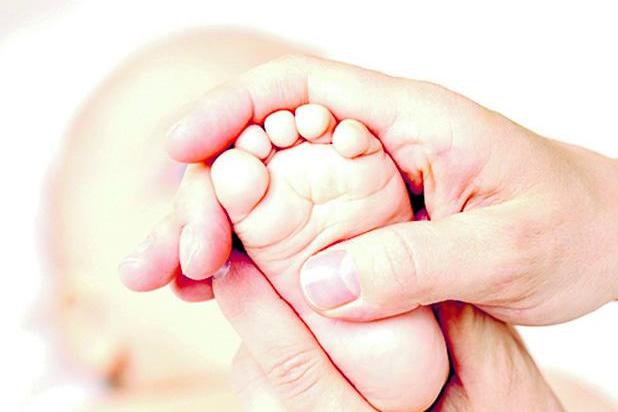The heel prick test conducted by the Unified Health System (SUS) on newborns will result in more than double the number of diseases screened, from 6 to 14 groups of diseases detected, with the approval of Bill (PL) 5,043 / 2020, this Thursday ( 29), by the Federal Senate.
The project will be approved by the Presidency of the Republic and the new law must enter into force within 365 days after the publication of the law promulgated by the PL.
Currently, the SUS test identifies congenital hypothyroidism. Phenylketonuria. Sickle cell anemia; Cystic fibrosis (also known as cystic fibrosis); Congenital adrenal hyperplasia and biotinidase deficiency.
In accordance with the approved legislation, the process for inclusion of new groups of diseases in the heel prick test will take place in five stages. In the first of them, the examination will indicate, in addition to the six already predicted diseases, those related to excess phenylalanine and hemoglobin (haemoglobinopathies). It should also include the diagnosis of congenital toxoplasmosis.
In the second step, tests for galactosemia will be included; Amino acid morbidity. Urea cycle disorders. And disorders of beta-oxidation of fatty acids (deficiency in the conversion of certain types of fats into energy).
Tests for lysosomal diseases (affecting cell function) are scheduled to enter the third phase of the Pezinho test enlargement. In the fourth stage, primary immunodeficiency tests (genetic problems in the immune system) will be included.
Finally, in the fifth stage, tests for musculoskeletal atrophy will be added (degeneration and loss of neurons in the spinal cord and brainstem, leading to progressive muscle weakness and atrophy).
The Senate-approved bill expanding the diagnosis of a baby’s foot test also indicates that during antenatal and postnatal care, health professionals must inform the pregnant woman and her mates of the importance of the baby’s foot test and the potential differences between the screening method. Provided by SUS and the method provided by the private network (which tracks more diseases).
The test is in the public and private systems
Only the standardized health system offers the basic heel prick test, which detects six diseases and can now include eight others. The extended version of the test makes for early diagnosis of more than 50 diseases, including rare diseases.
According to the Ministry of Health, it is considered a rare disease that affects up to 65 out of every 100,000 people. In Brazil, 75% of the 13 million people living with a rare disease are children.
How is the heel prick performed?
Blood is removed from the baby’s heel with a very fine needle, and drops are placed on paper, then sent to qualified public or private laboratories for the test.
In the private net, basic or extended foot test materials are made on the spot. In the public system, this does not happen in all municipalities, and the mother must be aware of the deadline, up to five days after birth, to transport the newborn to a basic health unit for blood collection.
Oversized heel test
The extended foot test should be done between the third and fifth days of the child’s life. The blood collected from the baby is the same basic test that SUS offers, but it uses a technique called tandem mass spectrometry (MS / MS). This makes it possible to track a group of diseases called inborn errors of metabolism, which include amino acid disorders, urea cycle disorders, organic acid disorders, beta-oxidation disorders of fatty acids, and lysosomal diseases.
Heel test result
If the foot test result is positive for one or more of the diseases that are part of the list, it is necessary to do the test with a new backer test. The main difference in knowing the information is the fact that you can do something to reduce the effects of future consequences from pathology and ensure the child’s quality of life
How much does the heel extension test cost?
The Basic Foot Test is free, offered by SUS, and every child has a right. But the child’s parents must request and pay for the expanded foot test.
On average, special services charge 250 BRL for a detailed examination of a newborn’s condition.
Six diseases the SUS foot test currently detects:
Congenital hypothyroidism: With a late diagnosis, the child has a severe mental retardation called cretinism.
Phenylketonuria: a rare congenital and inherited disease that affects the nervous system.
Sickle cell anemia: a blood disease caused by a genetic change in the shape of red blood cells, which reduces their ability to transport oxygen to the cells of the body and causes symptoms such as general pain, weakness and apathy.
– Cystic fibrosis: also known as cystic fibrosis, it is a hereditary genetic disease that is inherited and recessive, that is, it is transmitted from parents to the child. It affects the digestive system, respiratory system, and sweat glands.
Congenital adrenal hyperplasia: a disease that affects essential life hormones such as cortisol and aldosterone. Without early treatment, the child leads to severe dehydration in the first days of life, often progressing to death;
Biotinidase deficiency: a hereditary metabolic disease that can cause seizures, deafness, ataxia, hypotonia, dermatitis, hair loss and growth retardation.
–
In times of disinformation and epidemics, the newspaper Time Promotes commitment to professional and quality journalism in Minas Gerais. Our newsroom produces responsible and reliable information on a daily basis. Keep supporting us. Time fell.

“Hardcore beer fanatic. Falls down a lot. Professional coffee fan. Music ninja.”


![[VÍDEO] Elton John’s final show in the UK has the crowd moving](https://www.tupi.fm/wp-content/uploads/2023/06/Elton-John-1-690x600.jpg)



More Stories
The Director of Ibict receives the Coordinator of CESU-PI – Brazilian Institute for Information in Science and Technology
A doctor who spreads fake news about breast cancer is registered with the CRM of Minas
The program offers scholarships to women in the field of science and technology